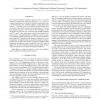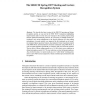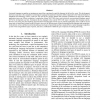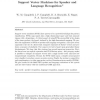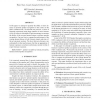48 search results - page 6 / 10 » The HKCUPU system for the NIST 2010 speaker recognition eval... |
ICASSP
2011
IEEE
12 years 10 months ago
2011
IEEE
The concept of speaker recognition using i-vectors was recently introduced offering state-of-the-art performance. An i-vector is a compact representation of a speaker’s utteranc...
CLEAR
2007
Springer
14 years 1 months ago
2007
Springer
We describe the latest version of the SRI-ICSI meeting and lecture recognition system, as was used in the NIST RT-07 evaluations, highlighting improvements made over the last year....
LREC
2010
13 years 8 months ago
2010
Automatic language recognition on spontaneous speech has experienced a rapid development in the last few years. This development has been in part due to the competitive technologi...
CSL
2006
Springer
13 years 7 months ago
2006
Springer
Support vector machines (SVMs) have proven to be a powerful technique for pattern classification. SVMs map inputs into a high dimensional space and then separate classes with a hy...
ICASSP
2011
IEEE
12 years 11 months ago
2011
IEEE
In this paper we attempt to quantify the ability of naive listeners to perform speaker recognition in the context of the NIST evaluation task. We describe our protocol: a series o...
